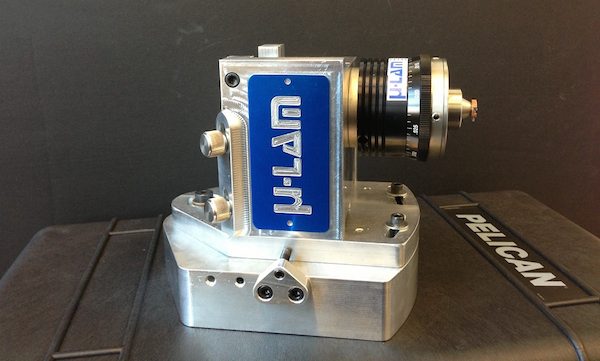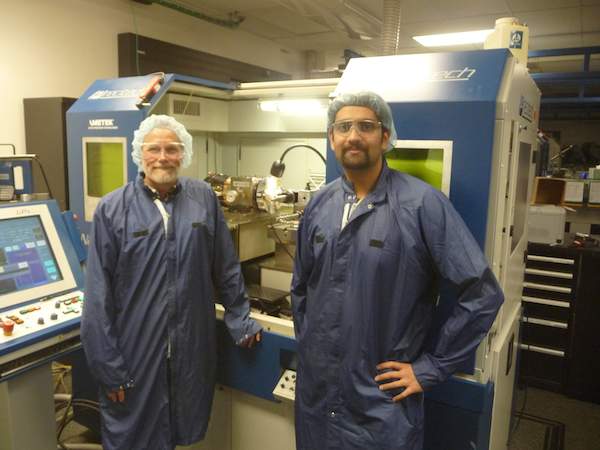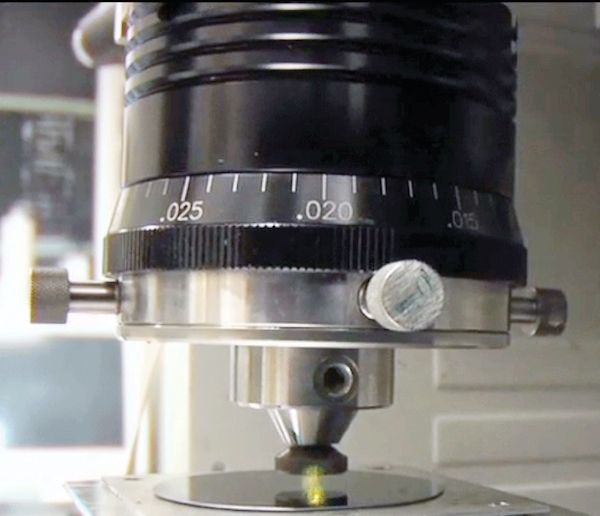
[Image above] The current version of the Micro-LAM system that could be mounted directly on to a ultra-precision lathe or a diamond turning machine. Credit: Deepak Ravindra, Micro-LAM
Machining hard materials is hard—it takes time, and it takes diamonds.
Diamond crystals—the crème de la crème of hard materials—are used in machining tools to cut, grind, and slice through materials like steel, ceramics, and such.
Despite diamonds’ hardness, though, all that machining wears out the crystals, adding time and money to manufacturing.
Scientists at Western Michigan University’s Manufacturing Research Center have come up with a better solution, though, by incorporating lasers with diamond machining tools to help do the dirty work.
“If you can find a way to soften the material it is cutting, that is, expose the diamond to a softer material, it doesn’t wear as much, so you don’t have to replace it as often, having to shut down the machine when you do,” John Patten, the Research Center’s director, says in an NSF discovery report.
The process that Patten pioneered with colleague Deepak Ravindra is called Micro-Laser Assisted Machining (Micro-LAM). It incorporates a laser into a high-pressure diamond cutter—focusing the laser right through the diamond—to soften the material surface being cut, allowing the diamond to slice through like a hot knife through butter.

John Patten (left) and Deepak Ravindra (right) completed a successful beta test session at a startegic partner site. Credit: Deepak Ravindra, Micro-LAM
Cutting softened material also results in a smoother surface, which requires less processing, and results in less breakage and fracturing—i.e., a better, stronger, smoother, and cheaper product.
Micro-LAM “addresses all of the main challenges associated with manufacturing hard and brittle materials, such as ceramics and semiconductors,” Ravindra says in the NSF article. The technique is retrofittable, making it easy to integrate into current machining setups.
According to the NSF article, “the device could have a major impact in the aerospace and defense industries, including in the manufacture of high powered electronics, computer chips, and lenses, windows and mirrors for optical and laser systems.”
Head over to the NSF article to read more about the tech, and check out the company Patten and Ravindra founded based upon it here.

